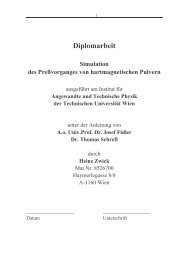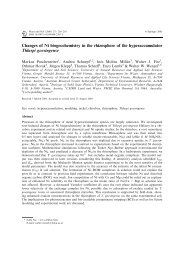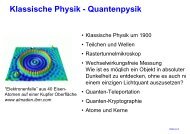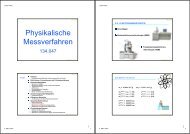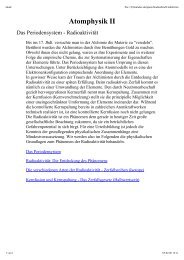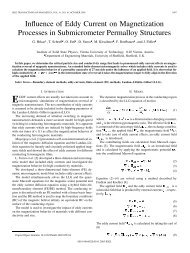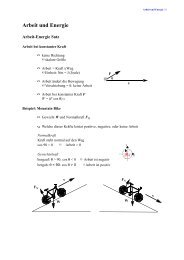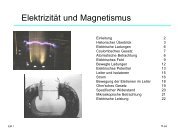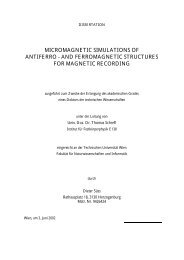Read Back Signals in Magnetic Recording - Research Group Fidler
Read Back Signals in Magnetic Recording - Research Group Fidler
Read Back Signals in Magnetic Recording - Research Group Fidler
You also want an ePaper? Increase the reach of your titles
YUMPU automatically turns print PDFs into web optimized ePapers that Google loves.
FEM Simulations<br />
has a greater <strong>in</strong>fluence. The result is a more likely antiparallel state, which is equivalent to a<br />
higher total resistance.<br />
This proves that the shield also have an <strong>in</strong>fluence on the read head behavior and cannot be<br />
neglected <strong>in</strong> micromagnetic simulations.<br />
6.2.4 Relaxation<br />
The micromagnetic behavior of the GMR sensor depends on the Gilbert damp<strong>in</strong>g constant.<br />
Start<strong>in</strong>g from an equilibrium state with an external field of H ext = 0.03 T <strong>in</strong> positive z-<br />
direction, the relaxation to the new equilibrium state when suddenly switch<strong>in</strong>g off the field, is<br />
shown <strong>in</strong> Figure 6.8.<br />
Output Voltage [V]<br />
0.1060<br />
0.1055<br />
0.1050<br />
0.1045<br />
0.1040<br />
0.1035<br />
0.1030<br />
0.0 0.2 0.4 0.6 0.8<br />
Time [ns]<br />
α = 0.1<br />
α = 0.2<br />
α = 0.3<br />
α = 0.5<br />
α = 1<br />
Figure 6.8: The output signal over time for a relaxation from equilibrium state with<br />
Hext = 0.3 T to the equilibrium state without field for different Gilbert damp<strong>in</strong>g constants.<br />
For large Gilbert damp<strong>in</strong>g constants we have strong damp<strong>in</strong>g, result<strong>in</strong>g <strong>in</strong> a quite large<br />
relaxation time (larger than 0.4 ns). New read heads work with a read frequency up to 2 GHz.<br />
Therefore such large relaxation times would weaken the read back signal. Fortunately realistic<br />
damp<strong>in</strong>g constants are about α ∼ 0.1,<br />
which lead to an undercritical damp<strong>in</strong>g, result<strong>in</strong>g <strong>in</strong><br />
damped oscillations. Smallest relaxation times are achieved for critical damp<strong>in</strong>g with<br />
damp<strong>in</strong>g constants around 0.3.<br />
73



